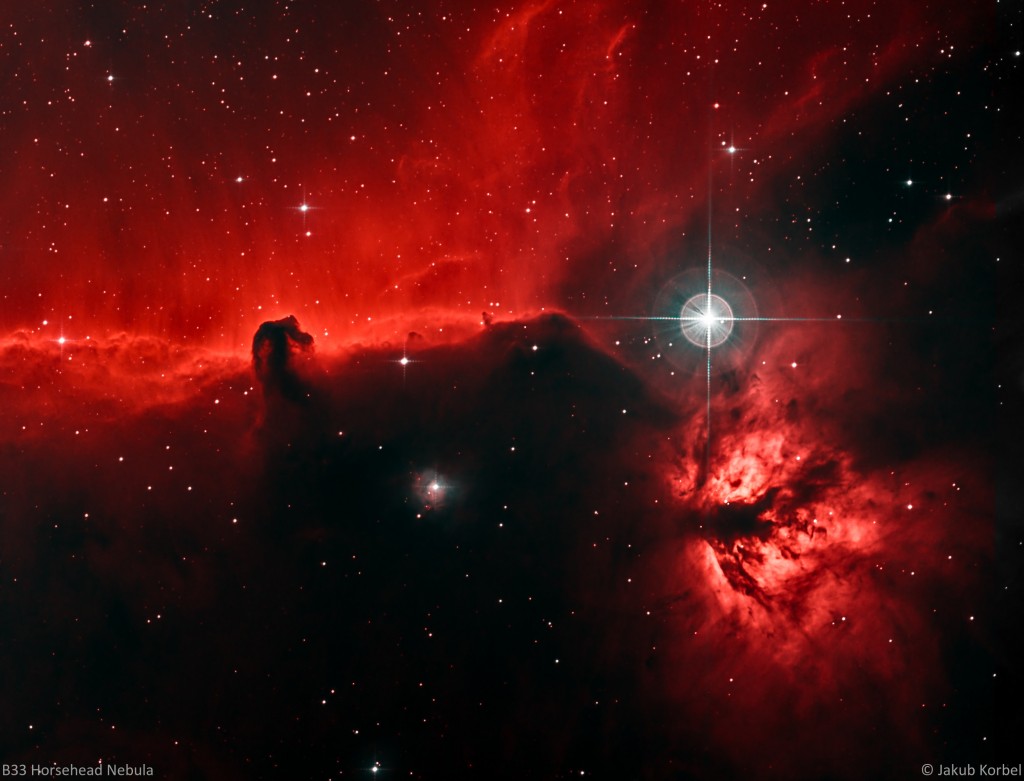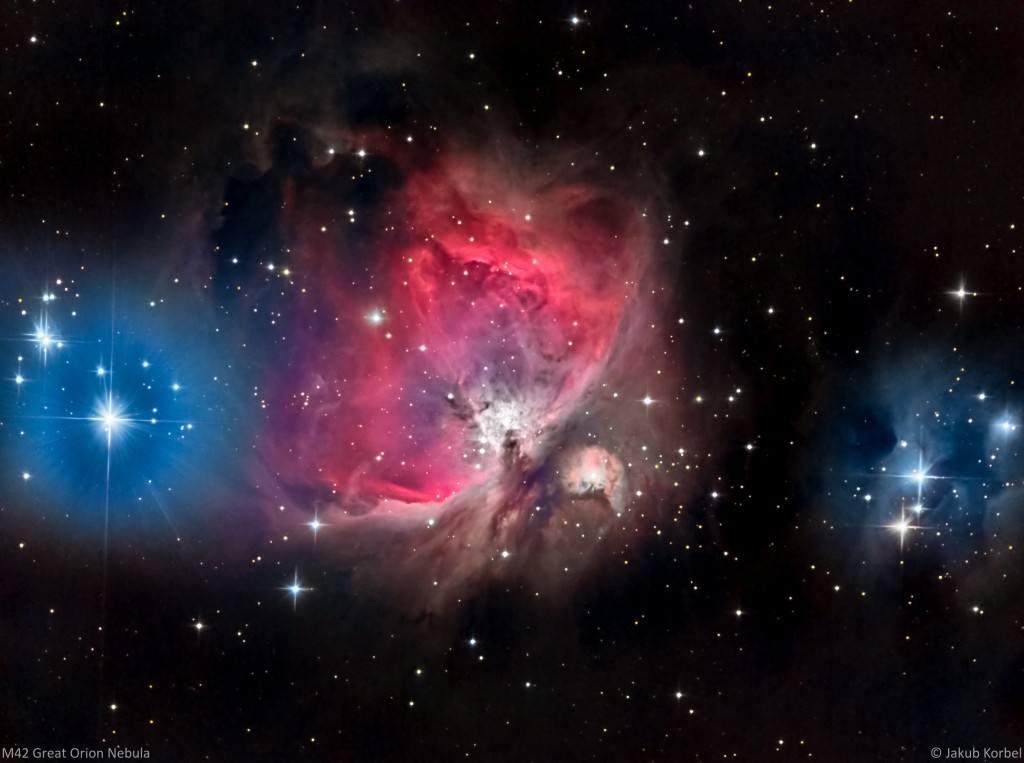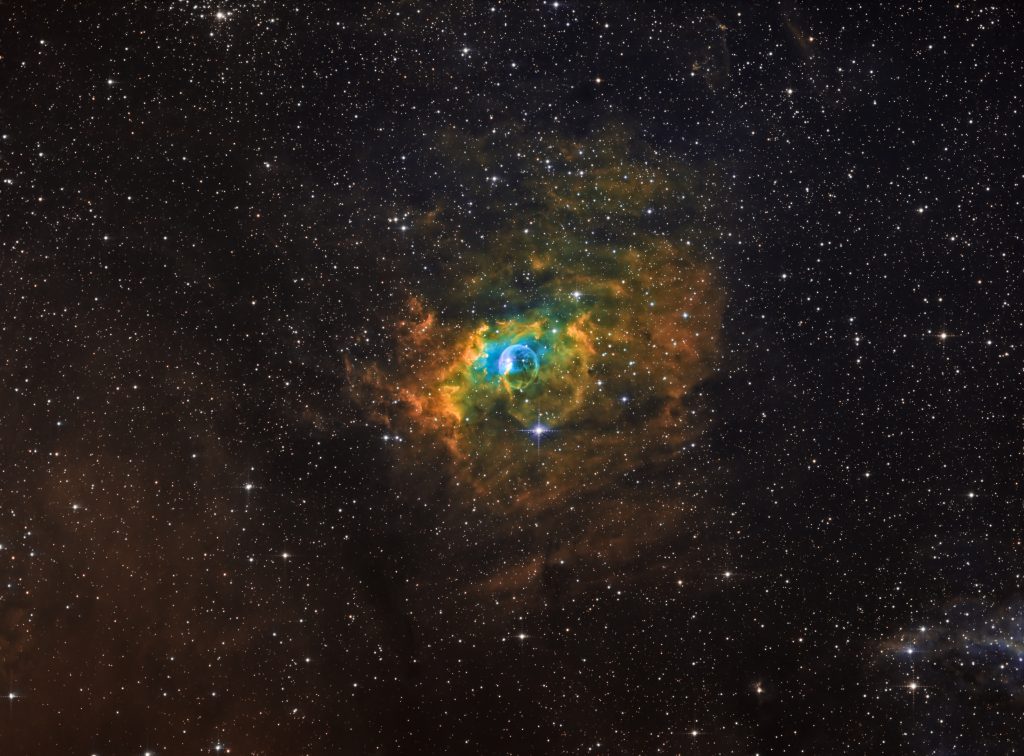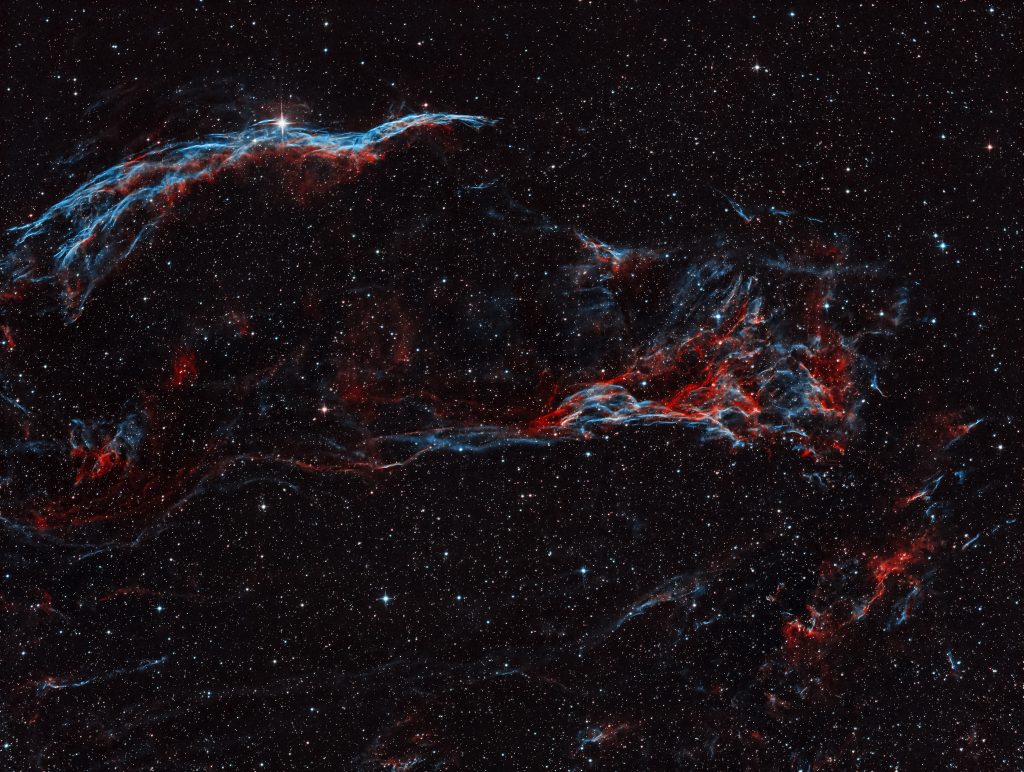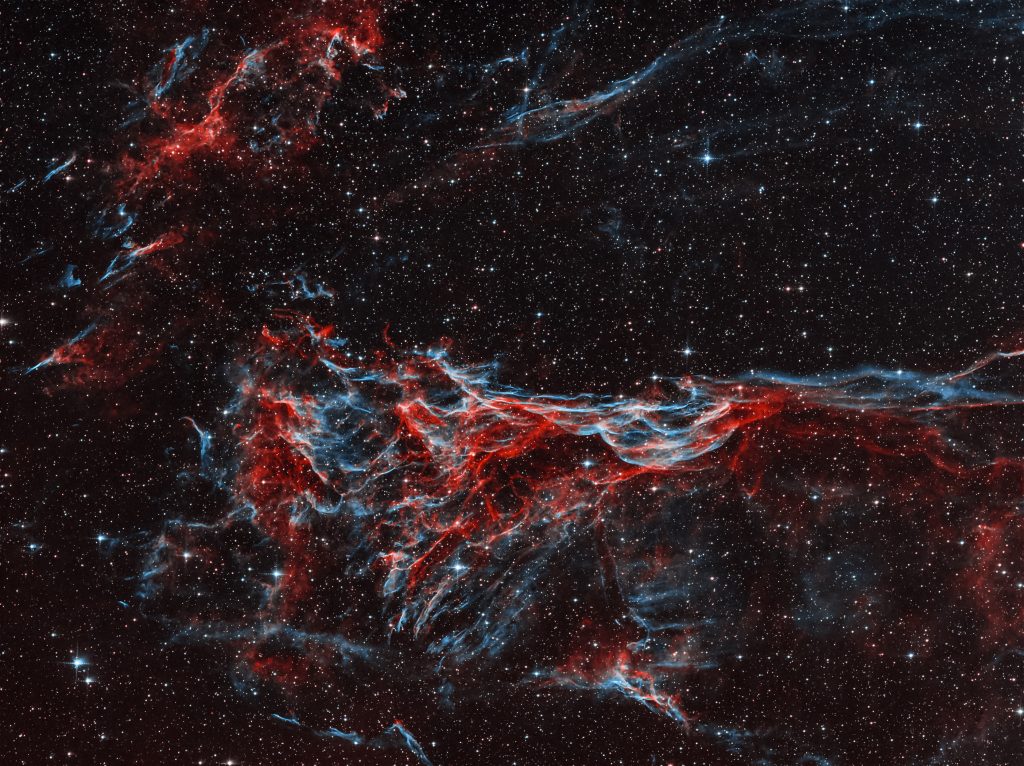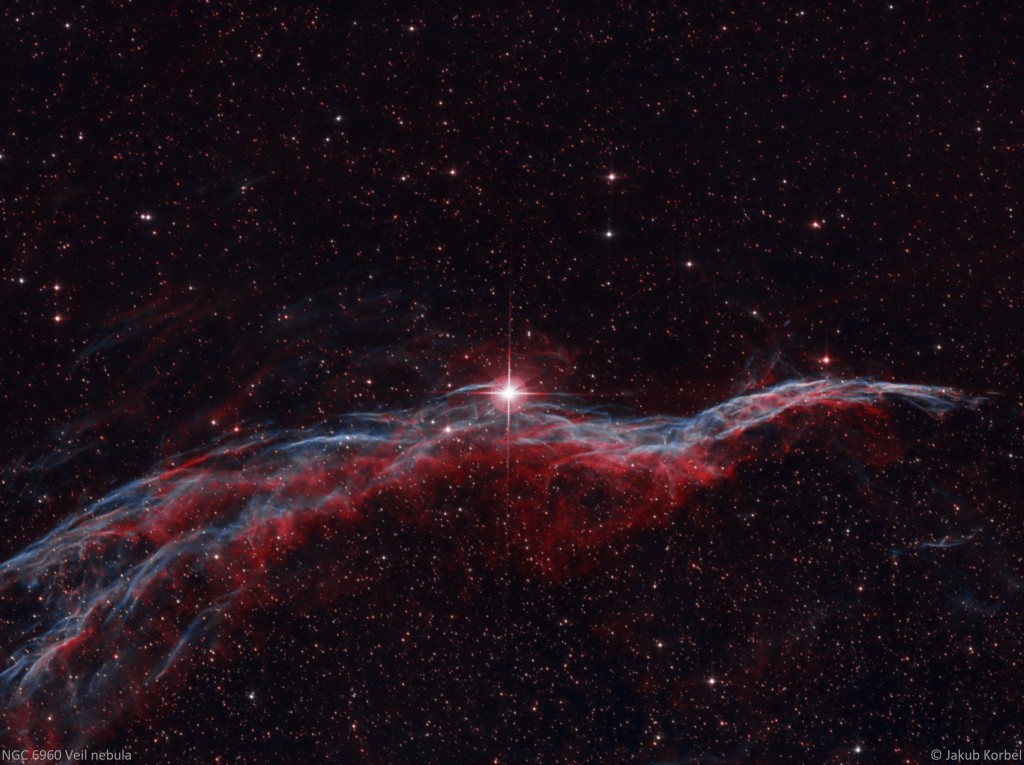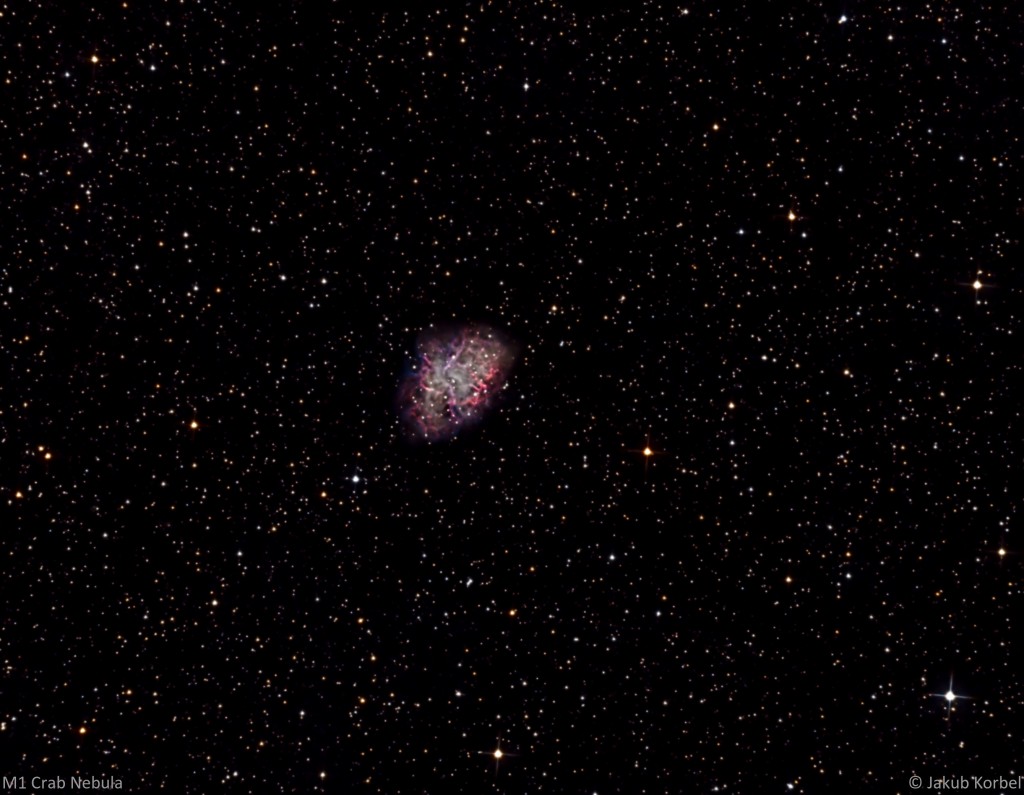Horesehead nebula is a dark nebula located in constellation Orion, approximately 1550 light years from Earth. The bright star is on the picture is called Alnitak (eastern star of Orion’s belt). Horsehead shape is a cloud of cold gas, blocking the light coming from ionized hydrogen in the background.
This nebula is my favorite, but it’s not so simple to photograph, due to its dimness. Even with very fast telescope (f-stop 2.8) I had to use quite long exposure times – 6 minutes. The picture was postprocessed by bi-color technique, which means putting 27 H alpha pictures into red channel and 17 OIII pictures into green and blue channel. This was done in Pixinsight software.

